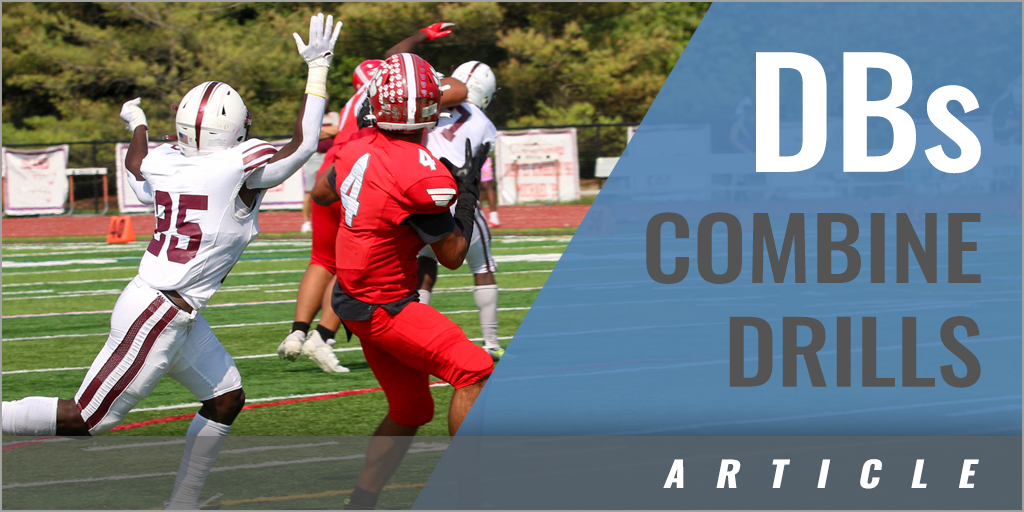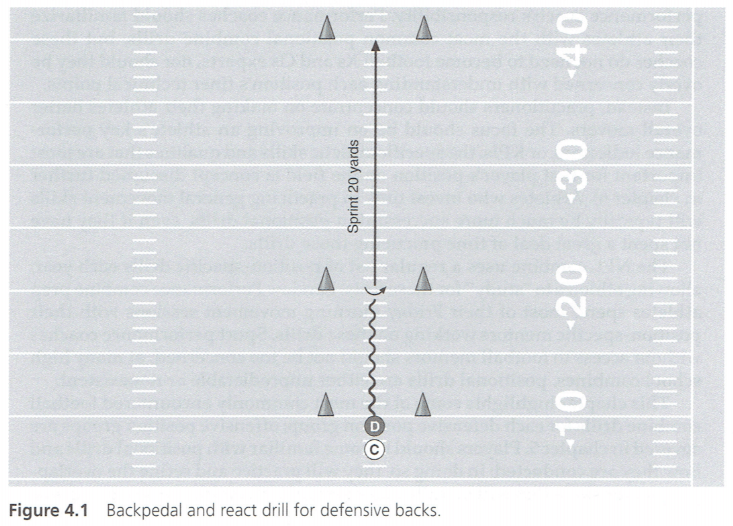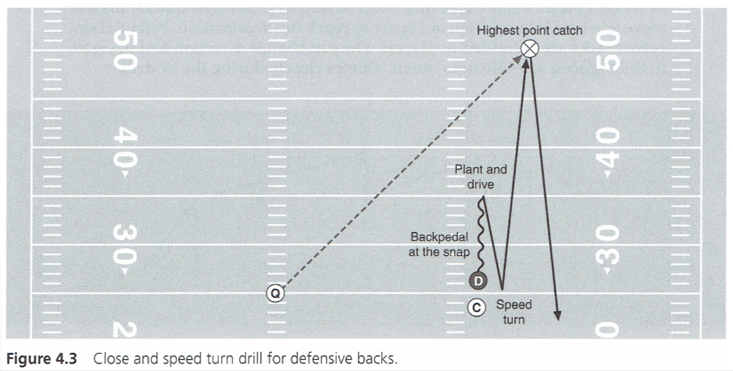|
By: Loren Landow, CSCS & Chris Jarmon, CSCS - Sports Performance Coaches Originally Published in: All-Pro Performance Training Provided by: Human Kinetics The primary KPIs that scouts look for in defensive backs are short-area quickness, acceleration, and top-end speed. BACKPEDAL AND REACT Execution The backpedal and react drill (figure 4.1) is essentially a position-specific 40-yard dash constructed for defensive backs. A lane is created with two cones at the starting line, two cones 10 yards downfield, and two more cones placed another 20 yards further, making a lane totaling 30 yards. The backpedal and react drill (figure 4.1) is essentially a position-specific 40-yard dash constructed for defensive backs. A lane is created with two cones at the starting line, two cones 10 yards downfield, and two more cones placed another 20 yards further, making a lane totaling 30 yards. Coaching Points Evaluators look for smooth execution in this drill. However, many players do not understand that it is a timed assessment. They often move much more slowly than they should. Evaluators want to see how well a defensive back covers space; a player's time covering this drill's 30 yards should roughly mirror his 40-yard dash time. Coaches often tell players to be smooth in this drill, which is certainly a helpful cue, but defensive backs need to show flat-out speed in their backpedal. If an athlete does not perform this drill at maximum speed, it will reflect poorly on his abilities.
W DRILL Execution The W drill (figure 4.2) assesses change-of-direction capability in tight spaces. Three cones are placed along the line of scrimmage, with the outer two cones just outside the hash marks and the middle cone directly in between. The athlete begins in his defensive back position at one of the outside cones, facing the coach. At the coach's cue, the player backpedals straight back. As the player reaches roughly 5 yards in his backpedal, the coach gives another signal to break forward diagonally to the next cone. Once the player is close to the next cone, the coach cues him to backpedal straight back again. He repeats this 5-yard backpedal and diagonal break one more time, and as he closes on the third cone he intercepts and returns a ball thrown at him. Coaching Points The W drill's demands are somewhat like the close and speed turn drill, described next, albeit in a smaller space. The W drill can be especially helpful to assess a player's short-area quickness so teams can see how quickly his feet move when he is in too tight of a space to reach full acceleration. Potential slot cornerbacks are identified as players who can change direction and navigate in tight spaces, so evaluators watch athletes closely during the W drill.
CLOSE AND SPEED TURN Execution Defensive backs must exhibit excellent change of direction ability to succeed at football's higher levels. The close and speed turn drill (figure 4.3) puts an athlete's general movement skills on display. For this drill, the defensive back lines up on the hash mark, directly across from the coach as if in man coverage. The throwing quarterback is located on the opposite hash, also at the line of scrimmage. All aspects of the drill occur at the coach's signal. Starting at the line of scrimmage, the athlete backpedals when the coach signals the snap. At the coach's next signal, the player plants and drives back toward the line of scrimmage as if closing on the ball. A third cue from the coach tells the player to make a speed turn away from the coach, at an angle toward the sideline. After his speed turn, he must locate the quarterback's ball in the air and make an interception, then change direction again to return the interception. Coaching Points This drill is an excellent assessment of acceleration, deceleration, and change of direction in multiple planes of movement. The athlete must be able to backpedal, decelerate, reaccelerate forward, decelerate once more, and make an efficient bridging movement to reaccelerate at an angle.
|









